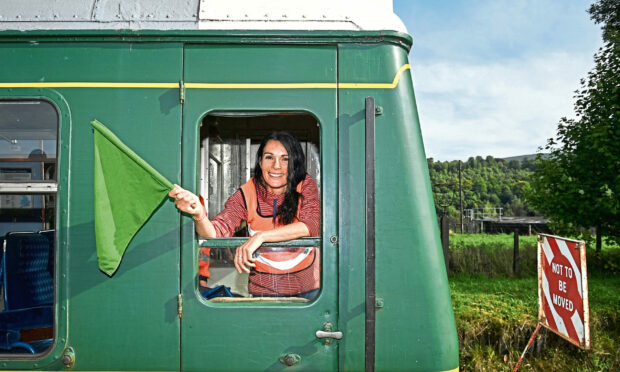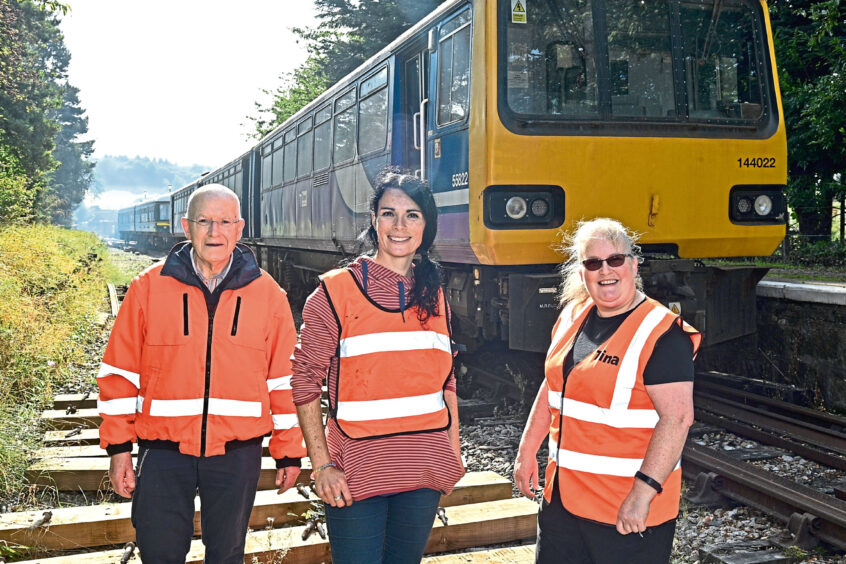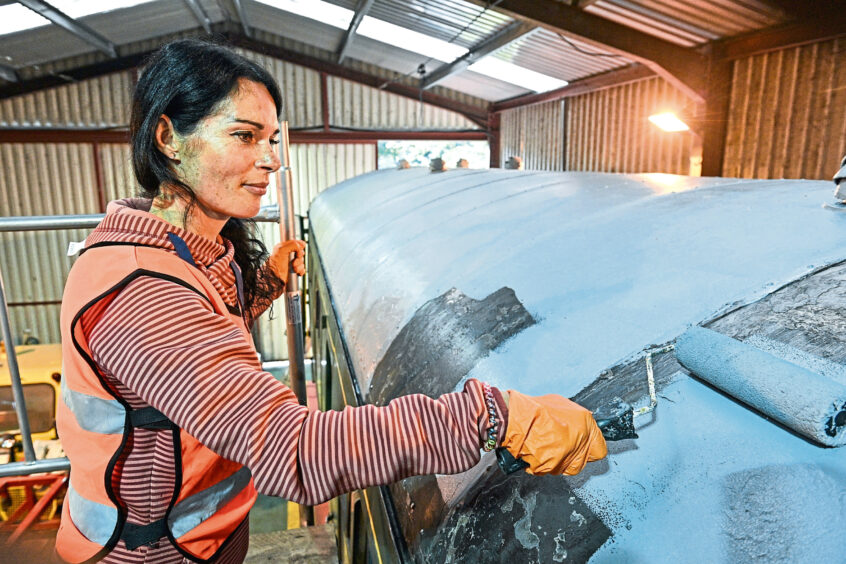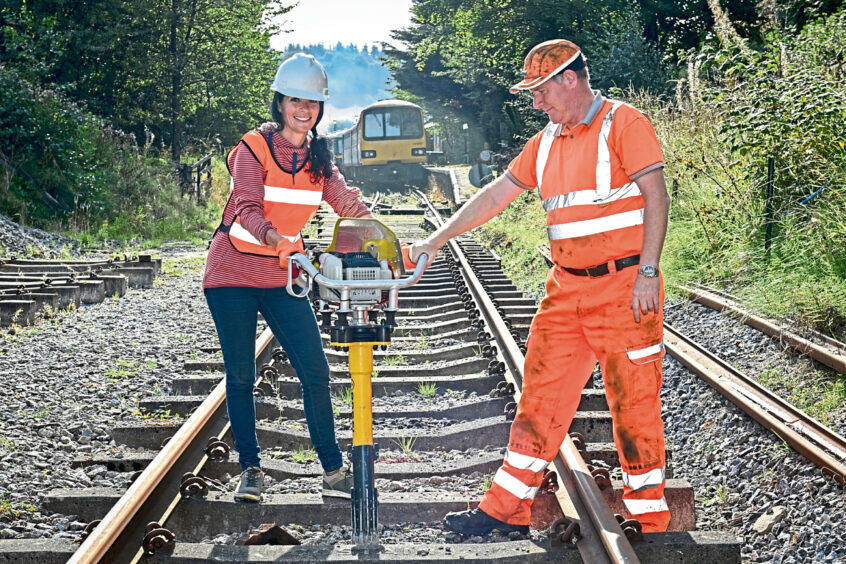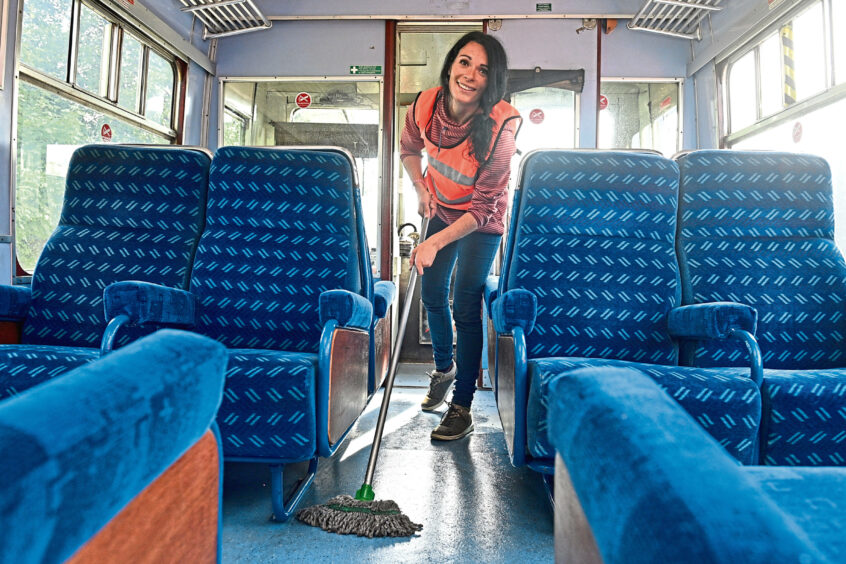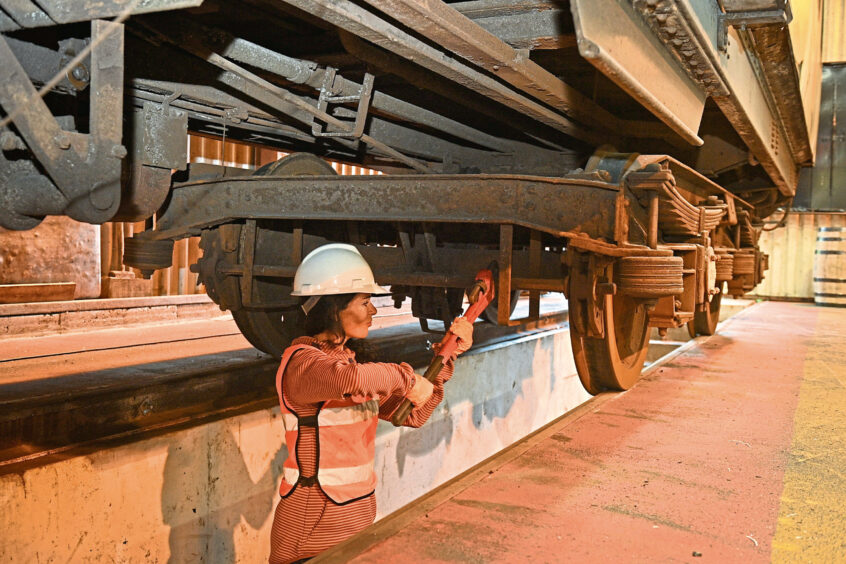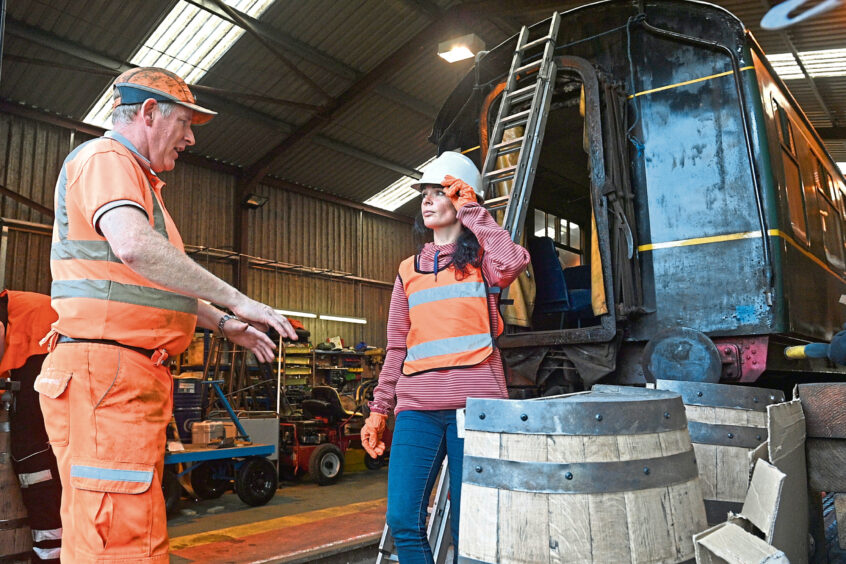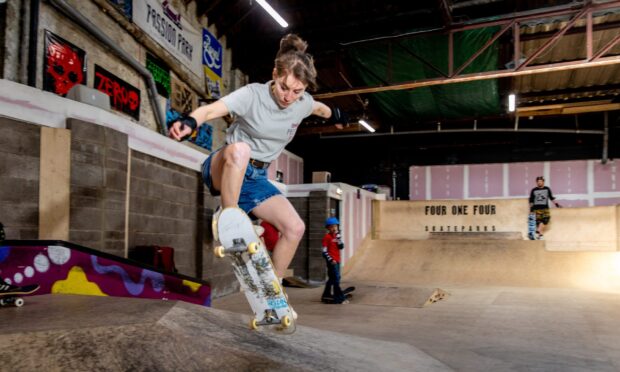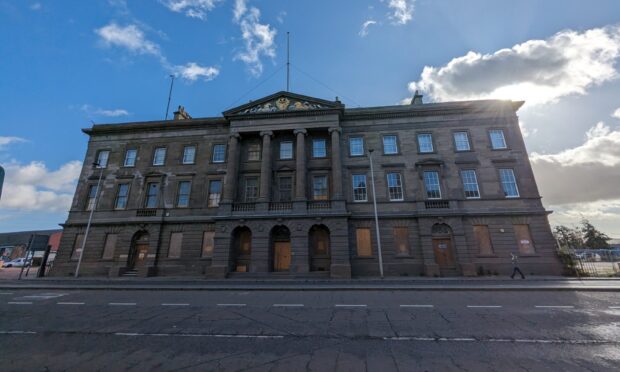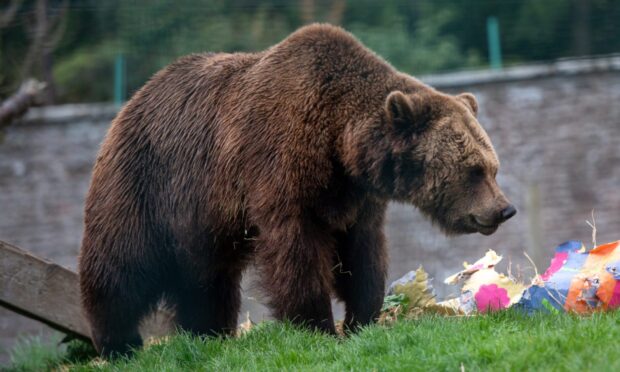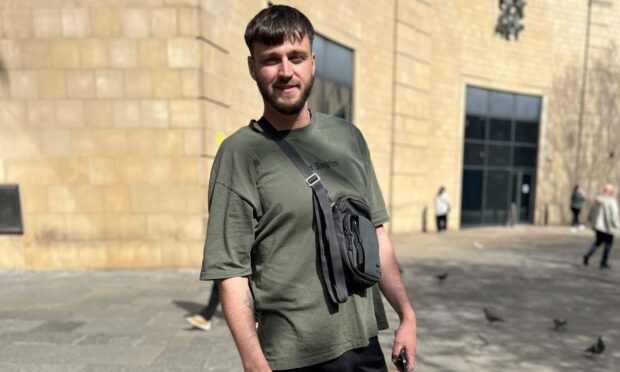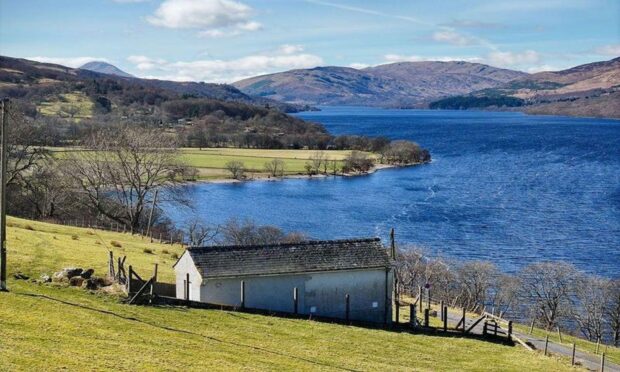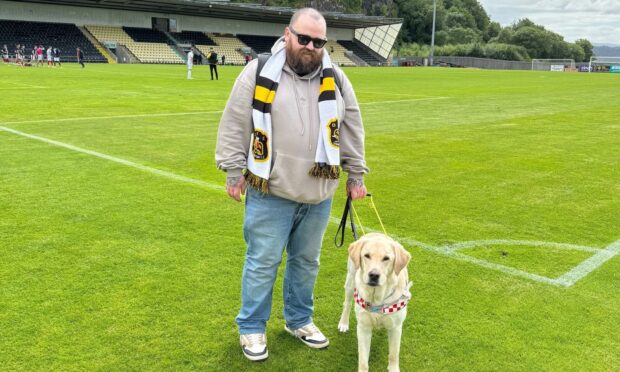Britain’s most northerly heritage railway is on the hunt for volunteers. Gayle spends a morning getting stuck in at Dufftown Station.
Hard hat, paintbrush, mop and monkey wrench at the ready – I certainly look the business.
I’ve turned up for a morning of volunteering at Dufftown railway station and after a cup of tea and a natter, I’m shown the ropes by the fantastically friendly team in charge.
There’s a huge variety of tasks to be tackled, whether maintaining trains, renovating carriages, mopping floors or clearing vegetation from tracks, and now is a fantastic time to crack on, with reduced train services running throughout autumn and winter.
So what is Keith and Dufftown Railway? In essence, it keeps alive an 11-mile line linking the two towns and is staffed entirely by volunteers.
The line between Keith and Dufftown was first opened in February 1862, linking to other lines which served routes within Moray and beyond.
Passenger trains began to decline in the late 1950s, at which point the railway was used to transport grain to Dufftown’s distilleries.
The route was later used by tourists although this stopped in 1991 when British Railways closed the line and threatened to lift the track.
It was two years later that the Keith and Dufftown Railway Association (KDRA) was established by a team of people passionate about the line’s survival, and who aimed to restore and reintroduce passenger services.Regular heritage trains began running in 2001 and 20 years on it’s a much-loved Moray attraction, with visitors coming from afar to enjoy scenic trips through the stunning Speyside countryside.
Rolling hills, rivers, forests, glens and distilleries pumping out their evocative aromas ensure the 40-minute journey is a feast for all the senses.
The carriages used today hail from 1959-1960, and they look brilliant for their age thanks to volunteers.
Dufftown Station also has a wee museum, packed to the gunnels with memorabilia, artefacts and newspaper clippings.
After a safety induction with Tina Wells and Alistair Coull, I meet chief engineer Bruce Crowe who tells me: “These old girls need a lot of TLC!” before thrusting a paintbrush into my hand.
“Fancy joining Graeme Henderson to paint that train’s roof?” he asks, pointing to a man up some scaffolding. How could I refuse!
Once I’ve climbed my way up, Graeme hands me a roller and a tray of silver paint and I get to work freshening up the roof. I feel rather proud of my handiwork!
Back on terra firma, Bruce kits me out with a hard hat and wrench and shows me how to tighten track bolts and adjust a train’s brakes. I’m then allowed to get my hands on a ballast packer and check out some old whisky barrels being transformed into a “dram tram” – a whisky-themed coach.
“This is pretty old technology we’re working with,” says Bruce, passing me a drill.
“A lot of volunteering here is about willingness, experience and being brave enough to take things apart. Stuff needs continual servicing and adjustments. Leaking roofs need fixed. There’s painting, riveting and patchwork. A lot of it is multi-tasking.”
Many jobs involve getting your hands dirty, and mopping the train’s floors is my next duty.
“Remember, they have to be sparkling clean!” winks Bruce.
By the time I’ve finished, I’m grinning from ear to ear. It’s strangely satisfying.
Volunteering is a great opportunity to get out and socialise as well as arming you with valuable skills.
“Everyone’s really friendly and welcoming; it’s like having a second family,” says Tina, a former aircraft technician.
“We all come from different backgrounds. You don’t need specialist skills to volunteer although some people do have these.”
Alistair, one of KDRA’s directors and a retired teacher, looks after the education side of things, welcoming school groups and producing books and education packs.
“We had a small group from Tomintoul Primary last month and some had never been on a train before,” he tells me. “They loved learning about the history of the railway and it was wonderful to see them enjoying themselves.”
There are around 40 “active” volunteers, but Alistair is keen to get more young people on board.
When trains are in service, volunteering jobs include “crewing”, and of course driving the train, which Tina absolutely loves.
“It was a wee bit scary when I realised how quickly the train could run away with you, so you have to be totally on the ball,” she smiles. “But it’s great fun!”
Everyone’s really friendly and welcoming; it’s like having a second family.”
TINA WELLS
Other jobs include staffing the ticket office, checking tickets and hosting events including the 1940s Weekend, Autumn Whisky Festival, Halloween Ghost Train, Fish and Chip and Santa specials.
After all my hard work, I’m in need of replenishment so I pop into the Sidings Café for lunch.
That’s what I call a morning well spent – a few hours of graft and then some fine grub on Dufftown Station’s platform!
- While Dufftown Station is regarded as the “hub” of volunteering, volunteers are also needed at Keith. Volunteer days at both stations are on Tuesdays and Saturdays.
- Trains are running on November 6 and 7 as part of the Speyside Whisky Festival. Return tickets, priced £11, include a dram and shortbread.
- Santa Special trains run in December. For more information, email santatrains.kdra@gmail.com
- See keith-dufftown-railway.co.uk or the Facebook page of Keith & Dufftown Railway Association for more information.
